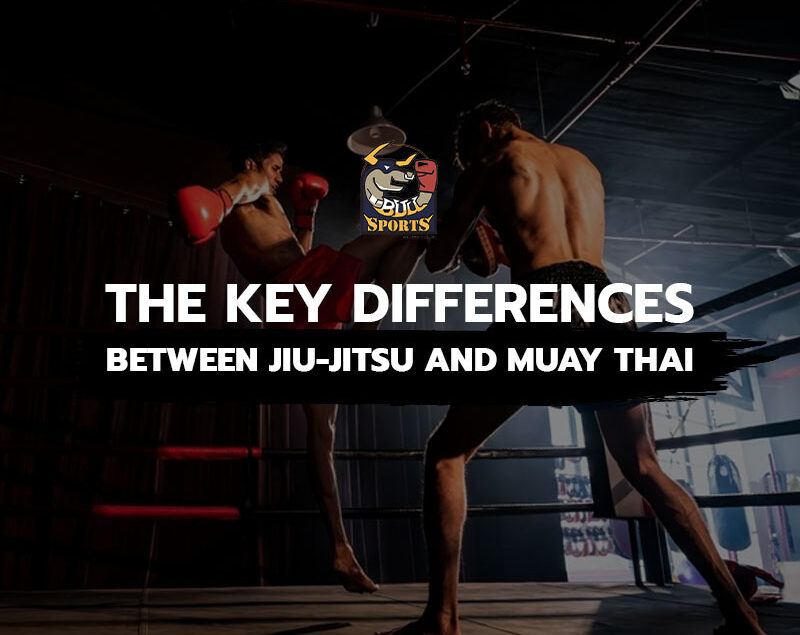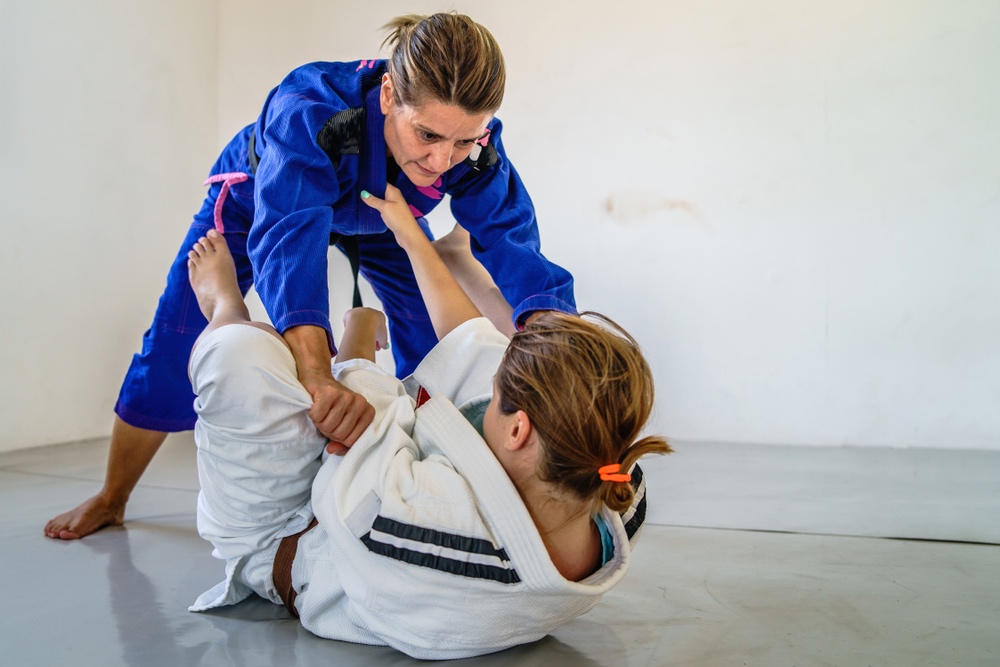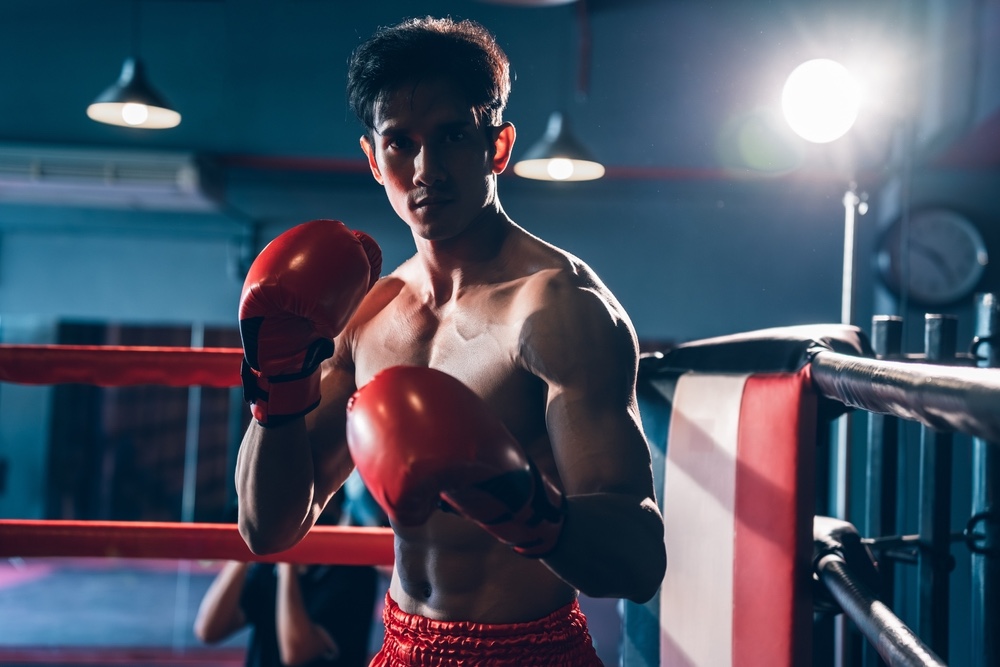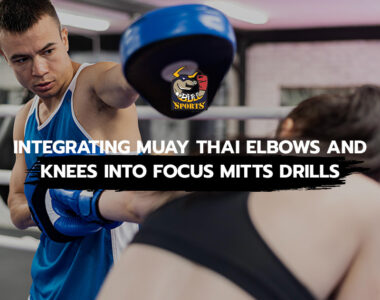
Jiu-Jitsu and Muay Thai are prominent pillars in the world of martial arts, each distinguished by unique techniques, philosophies, and applications. Celebrated for their effectiveness and global popularity, they exhibit significant differences in combat approach. This article explores the fundamental distinctions defining these martial arts, emphasizing their origins, contrasts, and similarities in practice and competition.
The History of Muay Thai
Muay Thai, a traditional martial art originating in Thailand, is known for using punches, kicks, elbows, and knee strikes, making it a highly effective and versatile fighting style. Its rich history spans centuries and is deeply intertwined with Thailand’s cultural and historical fabric.
The roots of Muay Thai can be traced back to the ancient martial art of Muay Boran, practiced by Siamese (now Thai) soldiers for self-defense and warfare. While the exact origins are difficult to pinpoint due to the scarcity of written records, it is believed that Muay Boran evolved over time, influenced by the constant conflicts and battles with neighboring regions.
Muay Boran was not only a martial art but also a form of entertainment, showcased during festivals, celebrations, and religious events. During the Ayutthaya Era (1350-1767), the sport became more structured and formalized.
The 20th century brought significant changes and modernization to Muay Thai. Western boxing influences led to the incorporation of gloves, timed rounds, and standardized rules. In 1921, the first permanent boxing stadium was established in Thailand, further cementing Muay Thai’s status as a national sport.
Muay Thai’s global recognition began to rise in the late 20th century with the introduction of international tournaments and the establishment of governing bodies like the World Muay Thai Council (WMC) in 1995. Today, Muay Thai is practiced worldwide, attracting fighters and enthusiasts from diverse backgrounds.
The History of Jiu-Jitsu

Jiu-Jitsu, a martial art focusing on grappling and ground fighting, has its origins in Judo, a Japanese martial art. In the early 20th century, Mitsuyo Maeda, a Japanese judoka, immigrated to Brazil to teach Judo. Among his students was the Gracie family, who adapted and refined the techniques, giving birth to Brazilian Jiu-Jitsu (BJJ). Today, jiu-jitsu is a globally recognized martial art and combat sport known for its effective ground control techniques. It is widely practiced in both self-defense and mixed martial arts (MMA) competitions.
Comparing the Similarities Between Jiu Jitsu and Muay Thai
Jiu-Jitsu and Muay Thai are two distinct martial arts with unique techniques and philosophies. Despite their differences, they share several key similarities, highlighting their effectiveness and cultural significance. Here, we explore these commonalities.
Both Are Sports
Jiu-Jitsu and Muay Thai have evolved from traditional martial arts into globally recognized sports. They feature competitive events that attract athletes and enthusiasts worldwide. Both are integral components of mixed martial arts (MMA), demonstrating their practicality in real-world combat scenarios.
Clinching & Sweeps
Despite their focus on different aspects of fighting, both Jiu-Jitsu and Muay Thai incorporate clinching techniques. In Muay Thai, the clinch controls opponents, delivers strikes, and executes sweeps to bring them down. Similarly, in Jiu-Jitsu, clinching sets up takedowns and submissions, emphasizing the critical elements of balance, leverage, and timing in both martial arts.
Discipline and Respect
Both Jiu-Jitsu and Muay Thai place a strong emphasis on discipline and respect. Practitioners learn values such as perseverance, humility, and respect for instructors, training partners, and opponents, fostering a culture of mutual respect and personal development.
Self-Defense
Both Jiu-Jitsu and Muay Thai excel in self-defense; Jiu-Jitsu equips practitioners with techniques to control and neutralize opponents, even from disadvantaged ground positions. Meanwhile, Muay Thai emphasizes powerful striking techniques and defensive maneuvers against multiple attackers. Together, these skills prepare practitioners of both arts to handle real-life self-defense situations effectively.
Training Culture
Jiu-Jitsu and Muay Thai share similar training cultures centered on rigorous physical conditioning, technique refinement, and sparring. Both arts cultivate a sense of community and camaraderie among practitioners through cooperative partner drills that build strong bonds and a supportive training environment.
Differences Between Jiu-Jitsu and Muay Thai

Jiu-Jitsu and Muay Thai are two distinct martial arts, each with unique characteristics that set them apart in technique, philosophy, and range.
Techniques
Jiu-Jitsu focuses heavily on ground fighting and submission techniques. Practitioners learn how to control opponents using joint locks and chokes, often from positions on the ground. In contrast, Muay Thai emphasizes striking techniques using punches, kicks, elbows, and knee strikes. It involves stand-up fighting techniques that are highly effective for close and mid-range combat.
Philosophy
Jiu-Jitsu promotes the idea that a smaller, weaker person can successfully defend against a larger opponent using proper technique and leverage. It encourages patience, control, and the strategic use of energy. Muay Thai, on the other hand, emphasizes aggression and toughness. Its philosophy revolves around overwhelming opponents with powerful strikes and maintaining a high pace throughout the fight. Muay Thai practitioners train to deliver strikes with maximum force and efficiency, aiming to dominate the battle through superior striking skills.
Range
Jiu-jitsu is most effective in close-quarters combat and ground fighting, where practitioners can utilize their grappling techniques to control and submit opponents. In contrast, Muay Thai is versatile across multiple ranges. It is proficient in delivering strikes from a distance with punches and kicks and engaging in close-quarters clinch work for devastating knee strikes and elbows.
Jiu Jitsu and Muay Thai : Which Fighting Style is Better ?
The debate over whether Jiu-Jitsu or Muay Thai is better depends largely on context and personal preferences. Jiu-Jitsu excels in ground fighting and submission techniques, emphasizing effective methods for controlling opponents and neutralizing threats on the ground. It prioritizes leverage, technique, and the ability to overcome larger opponents through skill and strategy.
Conversely, Muay Thai focuses on powerful striking techniques using punches, kicks, elbows, and knees, making it highly effective in stand-up combat and clinch situations. Its aggressive approach and versatility across different ranges appeal to those who prefer striking and stand-up fighting styles.
Ultimately, the choice between Jiu Jitsu and Muay Thai often comes down to individual goals, training objectives, and the specific demands of competitive or self-defense scenarios.
In conclusion, while both Jiu Jitsu and Muay Thai are revered martial arts with distinct techniques and philosophies, their differences in combat approach are significant. The choice between them often depends on personal preference, training goals, and the specific demands of competitive or self-defense contexts. Understanding these key differences allows practitioners to appreciate the rich diversity and effectiveness of these two celebrated martial arts traditions. We hope this article has empowered you to make informed decisions based on your needs and preferences.
Related Articles
What is Muay Thai : The History of Thailand’s National Sport



